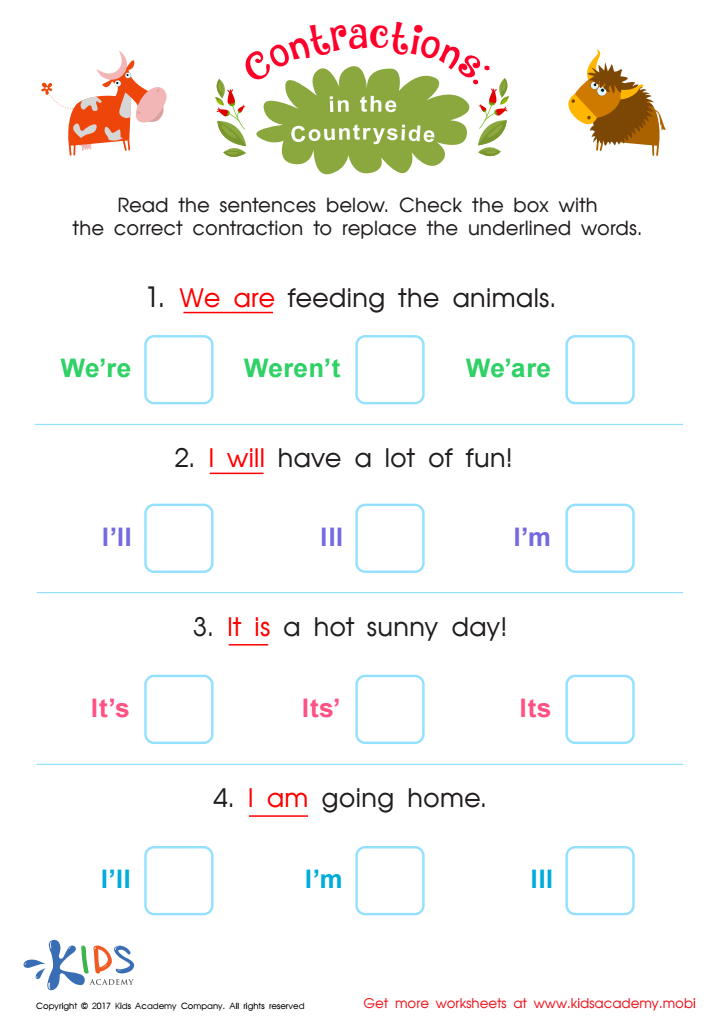Imagery interpretation Worksheets for Kids
1 filtered results
-
From - To


Contractions: In the Countryside Worksheet
Question/Answer
How does the mastery of the Imagery interpretation skill affect a student's performance at an early age?
Mastery of imagery interpretation at an early age significantly enhances a student's reading comprehension, creativity, and critical thinking. It enables them to visualize text content, making reading more engaging and memorable. This skill also fosters better retention of information, encourages an imaginative and deeper understanding of narratives, and improves their ability to infer meaning from context, boosting overall academic performance.
Why is the Imagery interpretation skill important for Grade 1 students?
Imagery interpretation skill is crucial for Grade 1 students as it enhances their ability to visualize, understand, and engage with the text, fostering their reading comprehension and creative thinking. It also aids in developing their vocabulary and ability to make connections between the text and their own experiences, laying a solid foundation for lifelong learning and literacy skills.
What are some effective activities to train students’ Imagery interpretation skill when teaching them about Grammar?
To train students' imagery interpretation skills in grammar, engage them in activities like creating visual mind maps of complex sentences, illustrating idiomatic expressions, storytelling through sequential pictures requiring descriptive grammar usage, and comparing and contrasting images to identify nuanced grammatical structures. Additionally, employ picture-based sentence reconstruction exercises and imagery-based grammar quizzes to enhance understanding and retention.

 Assign to the classroom
Assign to the classroom











